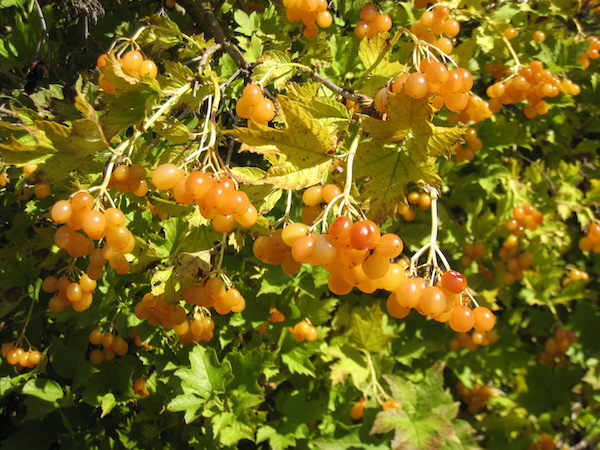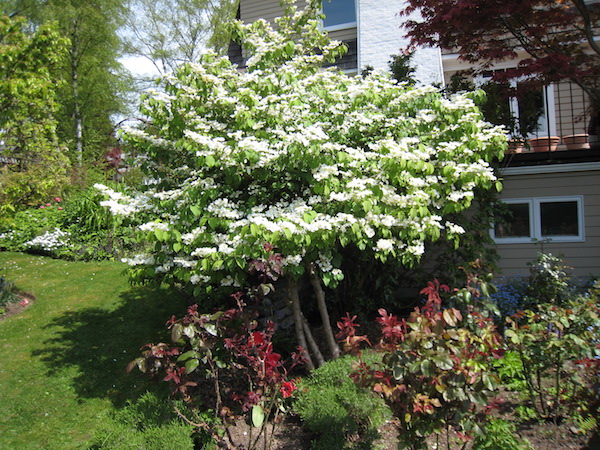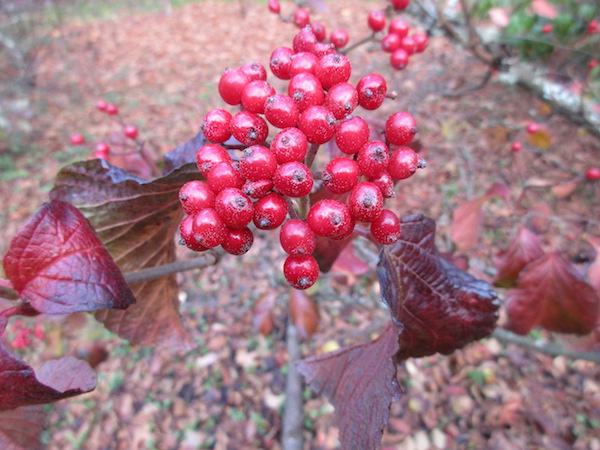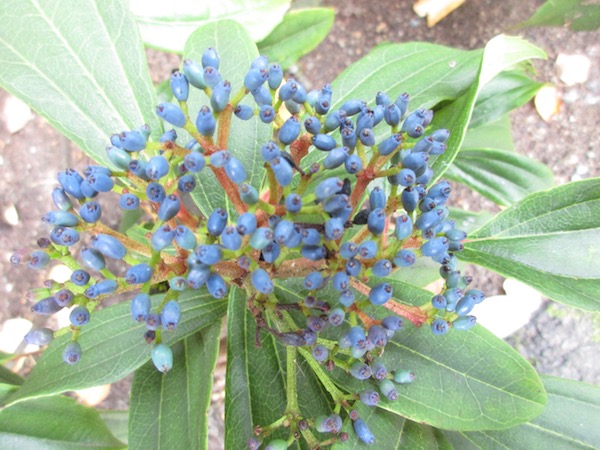Plant of the Month: November 2018
|
| Brief notes on Viburnum spp. |
ADOXACEÆ ; Adoxa Family
|
(VIBURNACEÆ ; CAPRIFOLIACEÆ)
|
| The genus Viburnum consists of about 180 species of shrubs or small trees to some 50 feet tall, deciduous, semi-deciduous or evergreen. The buds and leaves are opposite. Many species and hybrids are prized ornamental garden plants. The foliage can be lovely, whether glossy and evergreen, or flaming in brilliant fall color. The flowers are small always, but packed usually into tight clusters, white or pink rarely; some are scented sweetly, and are borne in fall, winter or spring. Viburnum grow in diverse habitats, mostly in warm temperate Asia and North America. Most favor moist soil; few handle dry summers well. They are easy to prune. |
| As for faults, a few species are weedy. Some stink. P.J. Van Melle: "Many of the species possess ill-smelling qualities of flower, foliage or fruit. On warm, moist days in the autumn, when the leaves are beginning to turn, they can be most oppressive indeed; and many a time people, at a loss to find the source of the foul odor, have ripped up sewer connections when they might simply have removed a Viburnum." |
| Over 50 Viburnum species have been reported edible. It is the fruit that is eaten usually. The berry-like fruit is mostly ripe between August and October, and can be yellow, orange, red, blue or black, attractive to birds. Usually 1-seeded, they vary in size from a quarter to two-thirds of an inch long. Some are flattened; a few taste horrible, some sour, others sweet, some insipid, a few delicious; some shrivel like rasins; some have styrofoam texture, are astringent and taste bland. The largest are about five-eighths of an inch long. A big drawback is most species fruit much only if cross-pollinated by another individual |
| Some species have the leaves variously eaten, used as spices, or made into a tea. For example, Viburnum setigerum Hance is the Tea Viburnum, its leaves used to make a tea. |
| Viburnum cylindricum Buch.-Ham. ex D. Don seeds are a cooking-oil source. |
Below are six random photos of Viburnum species.
Back |

Viburnum cylindricum evergreen foliage; photo by ALJ
|

Viburnum Opulus 'Aureum' orange berries; photo by ALJ
|

Viburnum plicatum flowers; photo by ALJ
|

Viburnum Tinus flowers; photo by ALJ
|

Viburnum dilatatum berries and fall color; photo by ALJ
|

Viburnum Davidii berries; photo by ALJ
|
|
|

